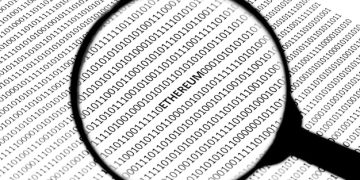Auditing and verifying smart contract code effectively

Auditing and verifying smart contract code is essential for identifying vulnerabilities, ensuring security, and fostering user trust in blockchain technology.
Auditing and verifying smart contract code is crucial in today’s blockchain landscape. Have you ever wondered how developers ensure their code is secure and reliable before going live? Let’s dive into the intricacies of this process.
Understanding smart contracts and their risks
Understanding smart contracts is vital in today’s digital landscape. These self-executing contracts are coded on the blockchain, allowing for secure and efficient transactions without intermediaries. However, they come with inherent risks that anyone involved in blockchain should be aware of.
What Are Smart Contracts?
Smart contracts are computer programs that run on the blockchain, storing rules and agreements in code form. They automatically execute actions when specified conditions are met. But why are they so popular?
- They increase efficiency by eliminating the need for intermediaries.
- They are transparent and secure due to their decentralized nature.
- They reduce costs associated with traditional contracts.
Despite these advantages, it’s crucial to recognize the risks involved. Since they rely heavily on code, even small errors can lead to significant problems.
Common Risks of Smart Contracts
One major risk of smart contracts is coding errors. Just one mistake can result in lost funds or unintended consequences. In addition to coding issues, there are also vulnerabilities that can be exploited by malicious actors. For example, a security flaw could allow someone to manipulate the contract for their benefit.
Moreover, smart contracts are immutable once deployed. This means that if an error is discovered after execution, it cannot be changed without creating a new contract. This presents a particular challenge for developers, as careful auditing is essential before launching any contract.
Another risk is external factors, such as changes in technology or regulations that could impact how smart contracts function. Developers must remain vigilant to adapt their contracts as necessary to align with evolving standards.
Why You Should Audit Smart Contracts
To mitigate these risks, auditing smart contracts is essential. A thorough audit helps identify vulnerabilities and confirms that the contract behaves as intended. This minimizes the chances of exploits and financial loss.
- Audits help ensure compliance with best practices.
- They provide assurance to investors and users regarding security.
- They can prevent costly mistakes, protecting both developers and users.
In conclusion, understanding smart contracts and their associated risks ensures a safer experience in the blockchain space. By being aware of potential pitfalls and emphasizing the importance of auditing, developers and users can confidently leverage this innovative technology.
The importance of auditing in blockchain technology

The importance of auditing in blockchain technology cannot be overstated. As blockchain continues to grow and evolve, ensuring the security and integrity of smart contracts becomes essential. This process not only protects developers but also the users interacting with these innovative systems.
What Does Auditing Involve?
Auditing involves a thorough examination of the code, smart contracts, and protocols. Skilled auditors analyze the blockchain solutions to uncover vulnerabilities that could be exploited. This meticulous review is crucial because even small errors can lead to significant financial losses or security breaches.
- Comprehensive code review is a key component of auditing.
- Assessing potential risks is part of the auditing process.
- Interaction testing ensures that all components work as expected.
Beyond identifying issues, auditing in blockchain technology helps build trust with users. A well-audited contract is more likely to attract users and investors, as they feel secure engaging with a reliable system.
Benefits of Auditing Blockchain Systems
When organizations invest in auditing, they can reap several benefits. One of the most notable advantages is enhanced security. By identifying and rectifying vulnerabilities before they are exploited, companies can protect their assets and maintain their reputation.
Additionally, auditing can aid in compliance with regulations, which is becoming increasingly important as governments develop frameworks surrounding blockchain technology. A compliant system reduces legal risks and paves the way for wider adoption.
- Improved security through proactive identification of vulnerabilities.
- Regulatory compliance minimizes legal risks.
- Increased user confidence fosters greater adoption and usage.
As we can see, the role of auditing is crucial in maintaining the integrity of blockchain systems. The assurance gained from an audit not only protects against potential threats but also supports the sustainable growth of the entire blockchain ecosystem.
Best practices for verifying smart contract code
Best practices for verifying smart contract code are essential for ensuring security and reliability in blockchain applications. Developers and users alike must understand how to effectively review this code to mitigate risks. A well-verified smart contract can significantly reduce the likelihood of vulnerabilities.
Code Review Techniques
One effective technique for verifying smart contract code is conducting thorough code reviews. This involves multiple developers examining the code to catch errors that could lead to security breaches. Using peer reviews can help improve code quality and ensure best practices are followed.
- Encourage collaboration among team members.
- Push for detailed comments explaining complex segments.
- Utilize version control systems to track changes efficiently.
In addition to peer reviews, automated testing is crucial. Automated tests can quickly identify bugs or vulnerabilities in the codebase. Developers should create a comprehensive suite of tests covering all functionalities of the contract.
Utilizing Tools for Verification
Employing specialized tools is another effective strategy. Tools like static analyzers can detect common pitfalls in smart contracts. These tools help developers pinpoint potential issues before the contract is deployed.
Additionally, using formal verification techniques provides high assurance of correctness in critical contracts. This mathematical approach can demonstrate that the contract behaves as intended under all conditions. However, it requires more resources and expertise compared to traditional methods.
- Incorporate static analysis tools in the development process.
- Use formal verification for high-stakes contracts.
- Regularly update tooling and testing methodologies.
The combination of manual code reviews, automated testing, and the right tools creates a robust verification process. As a result, developers can deploy their smart contracts with greater confidence, bolstering the overall integrity of blockchain applications. Commitment to these best practices is vital for the success and security of any blockchain project.
Key tools for auditing smart contracts

Key tools for auditing smart contracts play a crucial role in ensuring the security and reliability of blockchain systems. These tools help developers identify bugs, vulnerabilities, and compliance issues before deployment. By utilizing the right set of tools, teams can enhance the quality of their smart contracts.
Static Analysis Tools
Static analysis tools are essential for examining the code without executing it. These tools analyze the source code and flag potential vulnerabilities. Some popular tools include Slither and Mythril.
- Slither performs a detailed analysis of Solidity smart contracts.
- Mythril detects common security vulnerabilities.
- These tools help automate the auditing process, saving time.
Using static analyzers is vital, as they can catch simple errors that might be overlooked during manual reviews.
Testing Frameworks
In addition to static analysis, testing frameworks are necessary for ensuring that a smart contract behaves as expected. Frameworks like Truffle and Hardhat allow developers to write and run tests for their contracts.
These tools facilitate unit testing and integration testing, ensuring all components work together correctly. Creating a thorough testing suite helps identify issues early in the development process.
- Truffle provides a full development environment for testing.
- Hardhat offers advanced features for debugging and network simulation.
- Regular testing leads to more reliable deployments.
By integrating testing into the development cycle, teams can catch errors before they lead to failures.
Formal Verification Tools
For critical contracts, formal verification tools provide a high level of assurance that the code behaves as intended. Tools like Certora and K Framework apply mathematical methods to verify the correctness of smart contracts.
Although more complex and time-consuming, the confidence gained from formal verification is invaluable for contracts handling significant assets. Organizations need to balance the effort of formal verification with the risks of not implementing it.
- Certora can verify properties according to specific criteria.
- K Framework allows for advanced formal reasoning.
- These tools are essential for high-stakes environments.
Each of these tools plays a vital role in the umbrella of auditing smart contracts, ensuring that potential vulnerabilities are addressed and functionality is as expected. The combination of static analysis, testing frameworks, and formal verification strengthens the overall security posture of blockchain applications.
In conclusion, auditing and verifying smart contract code is crucial in the ever-evolving world of blockchain technology. By adopting best practices, developers ensure that their contracts are secure and reliable. Utilizing a combination of static analysis tools, testing frameworks, and formal verification techniques strengthens the overall security posture. These efforts not only protect assets but also instill trust among users. Ultimately, a commitment to rigorous auditing practices is key to the successful deployment of smart contracts, fostering a safer blockchain ecosystem.
FAQ – Frequently Asked Questions about Auditing Smart Contracts
Why is auditing smart contracts important?
Auditing is important because it helps identify vulnerabilities and ensures the security and reliability of the contract before it is deployed.
What tools can I use for auditing smart contracts?
Key tools include static analysis tools like Slither and Mythril, as well as testing frameworks like Truffle and Hardhat.
How does formal verification work?
Formal verification uses mathematical methods to prove that a smart contract behaves as intended, providing high assurance of its correctness.
What are the benefits of thorough testing?
Thorough testing helps catch bugs early in the development process, ensuring that the contract works properly and reducing the risk of costly errors.





